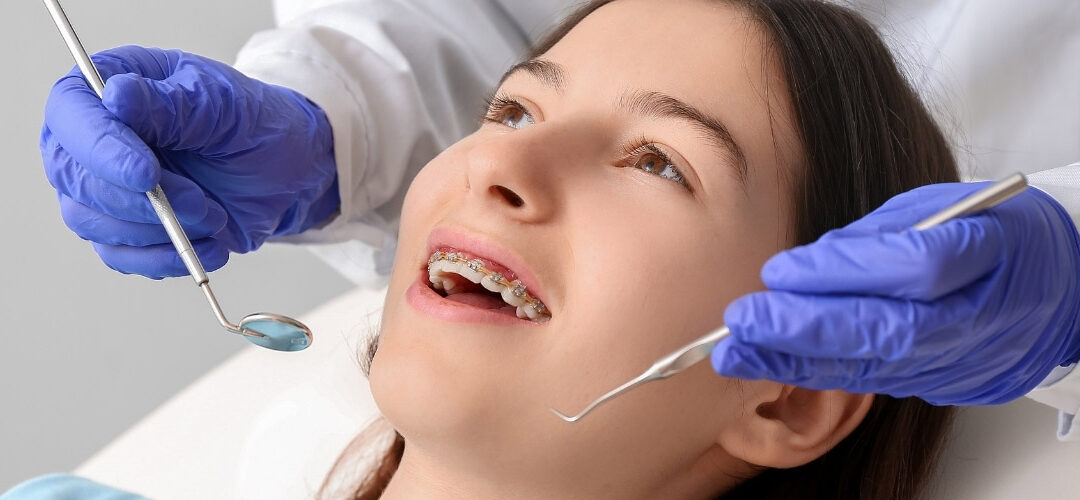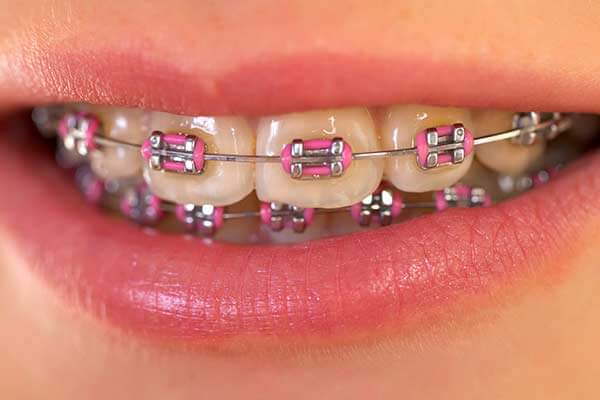Comprehensive Overview to Orthodontics Treatments for Fixing Oral Imbalances
Understanding the details of each procedure, including their devices, benefits, and prospective disadvantages, is vital in making informed choices concerning one's orthodontic therapy. As we navigate through the comprehensive overview to orthodontic treatments for dealing with oral imbalances, the intricate information of each approach will certainly unfold, dropping light on the course towards a harmonious and functional dental placement.
Orthodontic Procedures Introduction

Regular changes and tracking are important parts of orthodontic treatment to make certain progression is on track and to make any required adjustments along the means. By undertaking orthodontic treatments, patients can not only accomplish a straighter grin yet likewise boost their overall oral wellness and function.
Typical Braces: How They Work
When considering orthodontic therapies for dental misalignments, typical braces stand out as a tried and true method for remedying teeth placing. Conventional dental braces consist of braces, cords, and bands that work with each other to apply continual pressure on the teeth, slowly relocating them into the preferred placement.
One key element of just how conventional dental braces job is the process of bone improvement. As stress is related to the teeth with the dental braces, the bone surrounding the teeth is improved to sustain the new tooth settings. This remodeling is crucial for the long-lasting stability of the dealt with alignment. Individuals will require regular changes at the orthodontist's office to make sure the braces remain to use the proper pressure for effective teeth activity.
Unnoticeable Aligners: Pros and Disadvantages
These clear, custom-made trays are practically unnoticeable when worn, making them an enticing alternative for individuals seeking a more cosmetically pleasing orthodontic treatment. Clients can eliminate the aligners before consuming or brushing their teeth, reducing the threat of food getting stuck in the device and streamlining the cleaning process.

Surgical Orthodontic Options
Surgical treatments in orthodontics existing feasible alternatives for resolving intricate oral imbalances that might not be effectively dealt with through conventional orthodontic treatments. While traditional braces and invisible aligners can correct many orthodontic issues, certain cases call for medical treatment to attain optimal results. Surgical orthodontic options are usually suggested for extreme malocclusions, considerable jaw inconsistencies, and situations where the underlying bone structure needs modification to accomplish proper alignment.
One usual medical orthodontic treatment is orthognathic surgery, which involves rearranging the jaws to remedy practical problems such as difficulty speaking or eating. This surgical treatment is frequently performed in collaboration with an orthodontist that assists align the teeth before and after the treatment. Surgical orthodontics may also entail procedures to reveal affected teeth, eliminate excess periodontal cells, or reshape the jawbone to create an extra harmonious facial account.
Before taking into consideration medical orthodontic options, people undertake a thorough examination to figure out the necessity and potential benefits of such interventions. cumming orthodontics. While surgical treatment might seem difficult, it can considerably improve both the function and appearances of the smile in situations where standard orthodontic treatments discover this info here drop short
Retainers and Post-Treatment Care

Post-treatment treatment involves complying with the orthodontist's guidelines faithfully. This might include appropriate dental hygiene practices, attending follow-up visits, and putting on the retainers as prescribed. Failing to abide by post-treatment treatment guidelines can result in relapse, where the teeth progressively relocate back towards their initial placements. Constant retainer wear, great dental health, and regular dental examinations are right here crucial for maintaining the results achieved through orthodontic surgery and making sure the lasting security of the remedied oral placement.
Verdict
In final thought, orthodontic procedures provide various alternatives for dealing with oral misalignments. Traditional dental braces make use of metal brackets and wires to change teeth into proper alignment. Invisible aligners provide an even more very discreet alternative but might not appropriate for all cases. Surgical orthodontic alternatives are offered for much more severe imbalances. Retainers are commonly made use of post-treatment to preserve the new placement. Overall, orthodontic procedures can efficiently boost oral health and visual appearance.
As we browse through the thorough guide to orthodontic treatments for correcting dental imbalances, the elaborate information of each method will certainly unravel, shedding light on the course towards a functional and unified oral positioning. - cumming braces
One of the most common orthodontic therapies is the usage of braces, which consist of steel brackets and cables that use gentle stress to slowly shift teeth into the wanted position.When thinking about orthodontic therapies for dental misalignments, typical braces stand out as a tried and true technique for correcting teeth positioning. In addition, unnoticeable aligners might not be ideal for complicated orthodontic concerns that require more substantial teeth movement, as they are usually advised for light to moderate cases. Retainers are personalized orthodontic devices developed to hold teeth in their dealt with settings after the conclusion of orthodontic therapy.